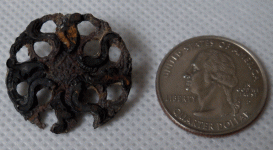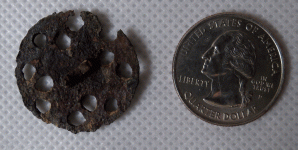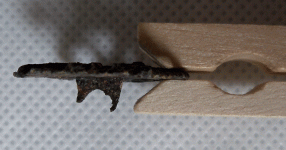mindcrime1988
Bronze Member
- Apr 17, 2011
- 1,688
- 2,635
- Detector(s) used
- Garrett AT Pro, XP Deus II, DetectorPro Headhunter, Nokta Triple Score, BlissTool & Pulsedive
- Primary Interest:
- Metal Detecting
I found an old button metal detecting near my house but need help identifying it. I am stationed close to Bitburg, Germany so that may help in searching for the origin. The button is 2.6 cm (1 inch) in diameter and roughly 1 mm thick. The button is not flat so the thickness varies. Any guesses?






